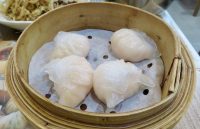
COLIN SIMPSON
Hong Kong Dim Sum Chain Conquers World
Tim Ho Wan, Hong Kong Station Branch
THINK Michelin star restaurant and the chances are you picture swanky surroundings, attentive waiters, showily presented food, and a wine list with stratospheric prices. Plus, at the end of the meal, an instantly sobering bill.
But in Hong Kong, it doesn’t have to be that way. At the Tim Ho Wan chain of dim sum restaurants you can enjoy a delicious feast for two for the equivalent of around $17. And the chain’s Sham Shui Po branch has a coveted Michelin star. This means that, in the view of the guide’s anonymous inspectors, it offers “high quality cooking, worth a stop!”
Two other branches, at Tai Kok Tsui and North Point, have the Bib Gourmand rating in the 2020 Michelin Guide Hong Kong Macau, indicating “good quality, good value cooking”. We’ve visited most of the outlets in the city – there are six – and in our view they all offer an identically high level of expertly prepared dim sum. We’ve always paid for our meals at the restaurants.
Our most recent visit was to the branch at Hong Kong Station in Central District. We shared four dishes – two of our Tim Ho Wan favourites, pan-fried turnip cake and steamed shrimp dumplings, plus rice noodles with shrimp, and deep fried bean curd roll with shrimp and chive. All were freshly cooked and delicious. The dumplings were served in a traditional bamboo steamer.
We also love the baked bun with barbecued pork, though we’re less keen on the chicken feet items. The bill came to HK$137, the equivalent of US$17 or £13. Other dishes include stewed pig’s blood jelly with pork intestine, and pork lung soup with almond juice.
Unlike a typical Michelin Guide place, you’ll find the setting pretty simple. In these coronavirus times, there are the inevitable acrylic dividers between tables. There’s no expensive wine list – Hong Kong’s Tim Ho Wan restaurants are not licensed. Instead, you wash everything down with tea – choose from pu-erh (our preference), tieguanyin or shoumei. The practice of serving dim sum originated in teahouses across the border in the Chinese mainland.
And you’re not handed a conventional menu. You order by ticking the dishes you want on a printed list, available in Chinese and English, and as they’re delivered to your table the staff tick them off on your bill. When you’re finished you take the bill to a cashier and settle up.
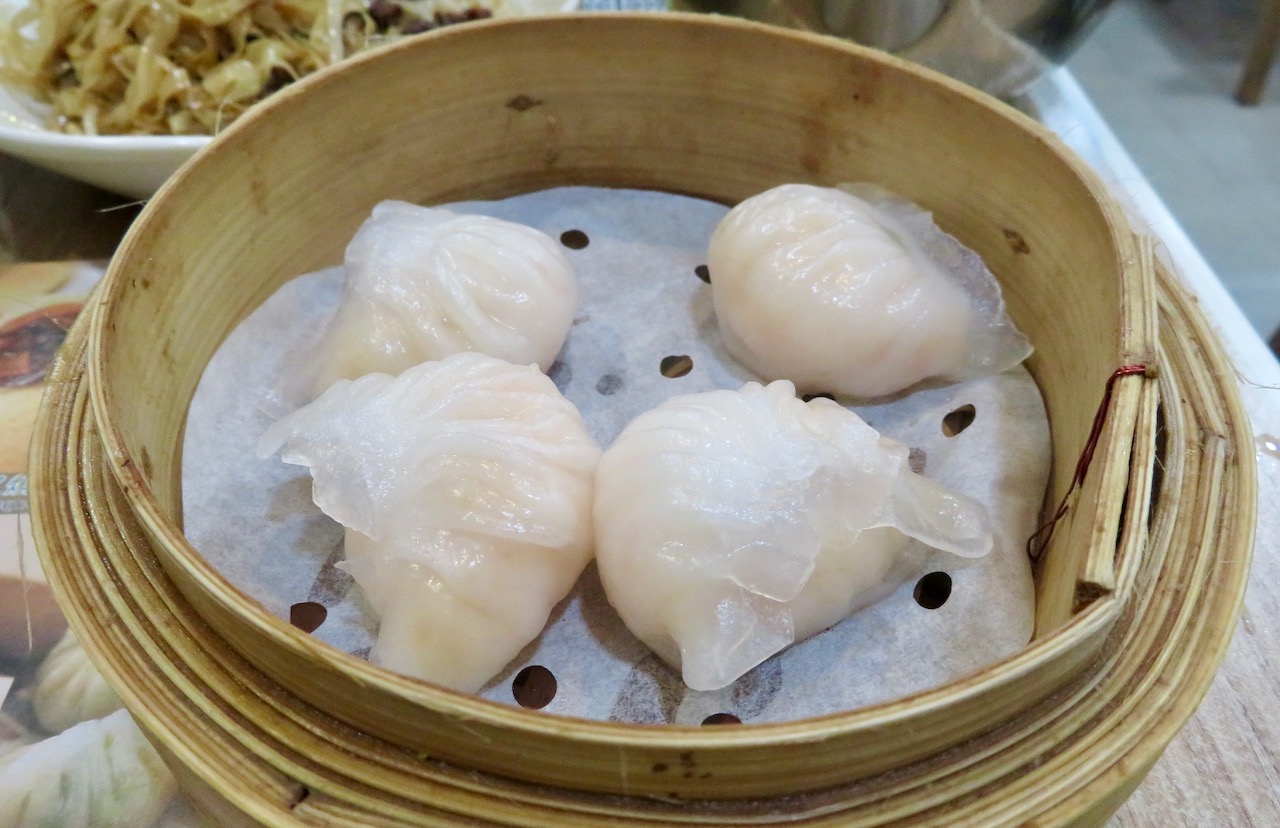 WHAT IS DIM SUM? It’s the name given to a wide range – said to number more than 1,000 – of Cantonese dishes traditionally served in restaurants during daytime. Classics include the shrimp dumplings and turnip cake we had at Tim Ho Wan, plus pork dumplings, steamed rice rolls and steamed cake.
WHAT IS DIM SUM? It’s the name given to a wide range – said to number more than 1,000 – of Cantonese dishes traditionally served in restaurants during daytime. Classics include the shrimp dumplings and turnip cake we had at Tim Ho Wan, plus pork dumplings, steamed rice rolls and steamed cake.
The chain was founded in Hong Kong in 2009 by two chefs, Mak Gui Pui, who formerly worked in a Michelin three-star restaurant, and Leung Fai Keung. Recognition came quickly – the following year the first 20-seater branch received its Michelin star in the Hong Kong edition of the famous red guide, and more outlets were opened. The restaurants are so popular that queues often form outside.
The brand later went global, and today there are franchised restaurants in the US, Japan, Australia, South Korea, Singapore, Taiwan, the Philippines, Thailand, Cambodia, Vietnam and Macau. The US outlets are in New York’s East Village and Hell’s Kitchen, Las Vegas, Irvine in California, and Hawaii. A branch is due to open soon in Houston.
Many of the dishes on offer will be familiar to those who’ve eaten at the Hong Kong outlets, though some of the international branches serve beer and wine as well as tea.
In Hong Kong, Tim Ho Wan’s dim sum is by no means the only cut-price Michelin meal on offer. The guide includes a street food section with details of places across the city where you can pick up delicious inexpensive snacks.
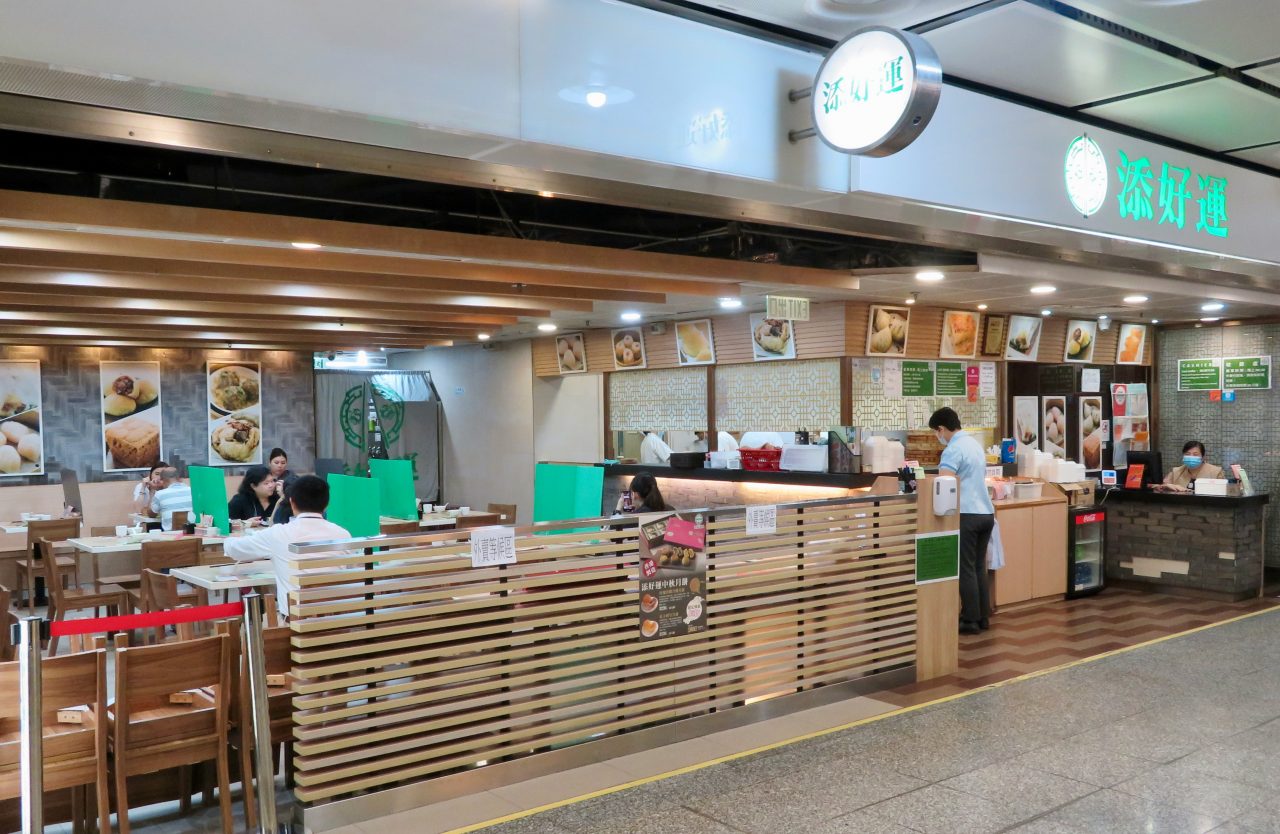
NEED TO KNOW: Tim Ho Wan
TIM HO WAN’S Hong Kong restaurants are at Sham Shui Po, Hong Kong Station, Olympic, Tseung Kwan O, North Point and West Kowloon Station. You can’t book – it’s a casual, relaxed setup where you just turn up, but be prepared to queue at busy times.
Dim sum is widely available across Hong Kong, though often at higher prices. Many other restaurants known for their dim sum, don’t – in accordance with tradition – serve it in the evening, offering other Cantonese fare instead.
If you want to enjoy Cantonese food in a luxury setting, then your best bet is probably Spring Moon at the Peninsula hotel in Kowloon. Expect to pay a lot more, though – the “classic menu” costs HK$2,188 per person – that’s US$282, or £217. And Spring Moon has the same one-star Michelin rating as Tim Ho Wan’s Sham Shui Po branch.
September 2020
MORE INFO
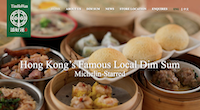 THE three Tim Ho Wan chains – Hong Kong, US and Asia-Pacific – each have their own websites, where you’ll find information about the restaurants and the food.
THE three Tim Ho Wan chains – Hong Kong, US and Asia-Pacific – each have their own websites, where you’ll find information about the restaurants and the food.
RELATED
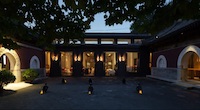 LUNCH AT THE WORLD’S BEST RESTAURANT: Beijing’s TRB Hutong has been named TripAdvisor’s Best Fine Dining Restaurant in the World. So what makes it so special? READ MORE
LUNCH AT THE WORLD’S BEST RESTAURANT: Beijing’s TRB Hutong has been named TripAdvisor’s Best Fine Dining Restaurant in the World. So what makes it so special? READ MORE
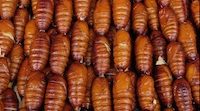 BUG, SCORPION STREET SNACKS: Starfish, larvae, bugs and seahorses were among the specialities on offer at Beijing’s Donghuamen Night Market. We recall this unusual market… READ MORE
BUG, SCORPION STREET SNACKS: Starfish, larvae, bugs and seahorses were among the specialities on offer at Beijing’s Donghuamen Night Market. We recall this unusual market… READ MORE
 DINNER AT RICK STEIN’S: When I first met Sue 30 years ago we used to head to Cornwall in the south-west of England for short breaks, staying at scenic coastal towns such as Rock and Port Isaac. Sue had been going to the area… READ MORE
DINNER AT RICK STEIN’S: When I first met Sue 30 years ago we used to head to Cornwall in the south-west of England for short breaks, staying at scenic coastal towns such as Rock and Port Isaac. Sue had been going to the area… READ MORE
RECOMMENDED
 WELCOME TO OUR WORLD! Afaranwide’s home page – this is where you can find out about our latest posts and other highlights. READ MORE
WELCOME TO OUR WORLD! Afaranwide’s home page – this is where you can find out about our latest posts and other highlights. READ MORE
 TOP 10 VIRTUAL ATTRACTIONS: Many of the world’s most popular tourists sites are closed because of the coronavirus crisis, but you can still visit them virtually while you’re self-isolating. READ MORE
TOP 10 VIRTUAL ATTRACTIONS: Many of the world’s most popular tourists sites are closed because of the coronavirus crisis, but you can still visit them virtually while you’re self-isolating. READ MORE
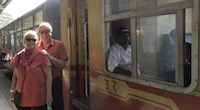 SHIMLA, QUEEN OF THE HILLS: Government officials once retreated to Shimla in the foothills of the Himalayas to escape India’s blazing hot summers. Now tourists make the same journey. READ MORE
SHIMLA, QUEEN OF THE HILLS: Government officials once retreated to Shimla in the foothills of the Himalayas to escape India’s blazing hot summers. Now tourists make the same journey. READ MORE
 TEN THINGS WE LEARNED: Our up-to-the-minute guide to creating a website, one step at a time. The costs, the mistakes – it’s what we wish we’d known when we started blogging. READ MORE
TEN THINGS WE LEARNED: Our up-to-the-minute guide to creating a website, one step at a time. The costs, the mistakes – it’s what we wish we’d known when we started blogging. READ MORE
 TROUBLED TIMES FOR EXPATS: Moving abroad can seem an idyllic prospect, but what happens when sudden upheavals or the inescapable realities of life intrude? READ MORE
TROUBLED TIMES FOR EXPATS: Moving abroad can seem an idyllic prospect, but what happens when sudden upheavals or the inescapable realities of life intrude? READ MORE
Disclosure: Afaranwide is an affiliate of leading travel operators such as Booking.com and Japan Rail Pass. If you purchase through our site we receive, at no additional cost to you, a small commission. We only work with companies we have used and recommend.
LET'S KEEP IN TOUCH!

COLIN SIMPSON
Hong Kong Dim Sum Chain Conquers World
Tim Ho Wan, Hong Kong Station Branch
THINK Michelin star restaurant and the chances are you picture swanky surroundings, attentive waiters, showily presented food, and a wine list with stratospheric prices. Plus, at the end of the meal, an instantly sobering bill.
But in Hong Kong, it doesn’t have to be that way. At the Tim Ho Wan chain of dim sum restaurants you can enjoy a delicious feast for two for the equivalent of around $17. And the chain’s Sham Shui Po branch has a coveted Michelin star. This means that, in the view of the guide’s anonymous inspectors, it offers “high quality cooking, worth a stop!”
Two other branches, at Tai Kok Tsui and North Point, have the Bib Gourmand rating in the 2020 Michelin Guide Hong Kong Macau, indicating “good quality, good value cooking”. We’ve visited most of the outlets in the city – there are six – and in our view they all offer an identically high level of expertly prepared dim sum. We’ve always paid for our meals at the restaurants.
Our most recent visit was to the branch at Hong Kong Station in Central District. We shared four dishes – two of our Tim Ho Wan favourites, pan-fried turnip cake and steamed shrimp dumplings, plus rice noodles with shrimp, and deep fried bean curd roll with shrimp and chive. All were freshly cooked and delicious. The dumplings were served in a traditional bamboo steamer.
We also love the baked bun with barbecued pork, though we’re less keen on the chicken feet items. The bill came to HK$137, the equivalent of US$17 or £13. Other dishes include stewed pig’s blood jelly with pork intestine, and pork lung soup with almond juice.
Unlike a typical Michelin Guide place, you’ll find the setting pretty simple. In these coronavirus times, there are the inevitable acrylic dividers between tables. There’s no expensive wine list – Hong Kong’s Tim Ho Wan restaurants are not licensed. Instead, you wash everything down with tea – choose from pu-erh (our preference), tieguanyin or shoumei. The practice of serving dim sum originated in teahouses across the border in the Chinese mainland.
And you’re not handed a conventional menu. You order by ticking the dishes you want on a printed list, available in Chinese and English, and as they’re delivered to your table the staff tick them off on your bill. When you’re finished you take the bill to a cashier and settle up.
 WHAT IS DIM SUM? It’s the name given to a wide range – said to number more than 1,000 – of Cantonese dishes traditionally served in restaurants during daytime. Classics include the shrimp dumplings and turnip cake we had at Tim Ho Wan, plus pork dumplings, steamed rice rolls and steamed cake.
WHAT IS DIM SUM? It’s the name given to a wide range – said to number more than 1,000 – of Cantonese dishes traditionally served in restaurants during daytime. Classics include the shrimp dumplings and turnip cake we had at Tim Ho Wan, plus pork dumplings, steamed rice rolls and steamed cake.
The chain was founded in Hong Kong in 2009 by two chefs, Mak Gui Pui, who formerly worked in a Michelin three-star restaurant, and Leung Fai Keung. Recognition came quickly – the following year the first 20-seater branch received its Michelin star in the Hong Kong edition of the famous red guide, and more outlets were opened. The restaurants are so popular that queues often form outside.
The brand later went global, and today there are franchised restaurants in the US, Japan, Australia, South Korea, Singapore, Taiwan, the Philippines, Thailand, Cambodia, Vietnam and Macau. The US outlets are in New York’s East Village and Hell’s Kitchen, Las Vegas, Irvine in California, and Hawaii. A branch is due to open soon in Houston.
Many of the dishes on offer will be familiar to those who’ve eaten at the Hong Kong outlets, though some of the international branches serve beer and wine as well as tea.
In Hong Kong, Tim Ho Wan’s dim sum is by no means the only cut-price Michelin meal on offer. The guide includes a street food section with details of places across the city where you can pick up delicious inexpensive snacks.

NEED TO KNOW: Tim Ho Wan
TIM HO WAN’S Hong Kong restaurants are at Sham Shui Po, Hong Kong Station, Olympic, Tseung Kwan O, North Point and West Kowloon Station. You can’t book – it’s a casual, relaxed setup where you just turn up, but be prepared to queue at busy times.
Dim sum is widely available across Hong Kong, though often at higher prices. Many other restaurants known for their dim sum, don’t – in accordance with tradition – serve it in the evening, offering other Cantonese fare instead.
If you want to enjoy Cantonese food in a luxury setting, then your best bet is probably Spring Moon at the Peninsula hotel in Kowloon. Expect to pay a lot more, though – the “classic menu” costs HK$2,188 per person – that’s US$282, or £217. And Spring Moon has the same one-star Michelin rating as Tim Ho Wan’s Sham Shui Po branch.
September 2020
MORE INFO
 THE three Tim Ho Wan chains – Hong Kong, US and Asia-Pacific – each have their own websites, where you’ll find information about the restaurants and the food.
THE three Tim Ho Wan chains – Hong Kong, US and Asia-Pacific – each have their own websites, where you’ll find information about the restaurants and the food.
RELATED
 LUNCH AT THE WORLD’S BEST RESTAURANT: Beijing’s TRB Hutong has been named TripAdvisor’s Best Fine Dining Restaurant in the World. So what makes it so special? READ MORE
LUNCH AT THE WORLD’S BEST RESTAURANT: Beijing’s TRB Hutong has been named TripAdvisor’s Best Fine Dining Restaurant in the World. So what makes it so special? READ MORE
 BUG, SCORPION STREET SNACKS: Starfish, larvae, bugs and seahorses were among the specialities on offer at Beijing’s Donghuamen Night Market. We recall this unusual market… READ MORE
BUG, SCORPION STREET SNACKS: Starfish, larvae, bugs and seahorses were among the specialities on offer at Beijing’s Donghuamen Night Market. We recall this unusual market… READ MORE
 DINNER AT RICK STEIN’S: When I first met Sue 30 years ago we used to head to Cornwall in the south-west of England for short breaks, staying at scenic coastal towns such as Rock and Port Isaac. Sue had been going to the area… READ MORE
DINNER AT RICK STEIN’S: When I first met Sue 30 years ago we used to head to Cornwall in the south-west of England for short breaks, staying at scenic coastal towns such as Rock and Port Isaac. Sue had been going to the area… READ MORE
RECOMMENDED
 WELCOME TO OUR WORLD! Afaranwide’s home page – this is where you can find out about our latest posts and other highlights. READ MORE
WELCOME TO OUR WORLD! Afaranwide’s home page – this is where you can find out about our latest posts and other highlights. READ MORE
 TOP 10 VIRTUAL ATTRACTIONS: Many of the world’s most popular tourists sites are closed because of the coronavirus crisis, but you can still visit them virtually while you’re self-isolating. READ MORE
TOP 10 VIRTUAL ATTRACTIONS: Many of the world’s most popular tourists sites are closed because of the coronavirus crisis, but you can still visit them virtually while you’re self-isolating. READ MORE
 SHIMLA, QUEEN OF THE HILLS: Government officials once retreated to Shimla in the foothills of the Himalayas to escape India’s blazing hot summers. Now tourists make the same journey. READ MORE
SHIMLA, QUEEN OF THE HILLS: Government officials once retreated to Shimla in the foothills of the Himalayas to escape India’s blazing hot summers. Now tourists make the same journey. READ MORE
 TEN THINGS WE LEARNED: Our up-to-the-minute guide to creating a website, one step at a time. The costs, the mistakes – it’s what we wish we’d known when we started blogging. READ MORE
TEN THINGS WE LEARNED: Our up-to-the-minute guide to creating a website, one step at a time. The costs, the mistakes – it’s what we wish we’d known when we started blogging. READ MORE
 TROUBLED TIMES FOR EXPATS: Moving abroad can seem an idyllic prospect, but what happens when sudden upheavals or the inescapable realities of life intrude? READ MORE
TROUBLED TIMES FOR EXPATS: Moving abroad can seem an idyllic prospect, but what happens when sudden upheavals or the inescapable realities of life intrude? READ MORE
Disclosure: Afaranwide is an affiliate of leading travel operators such as Booking.com and Japan Rail Pass. If you purchase through our site we receive, at no additional cost to you, a small commission. We only work with companies we have used and recommend.
LET'S KEEP IN TOUCH!
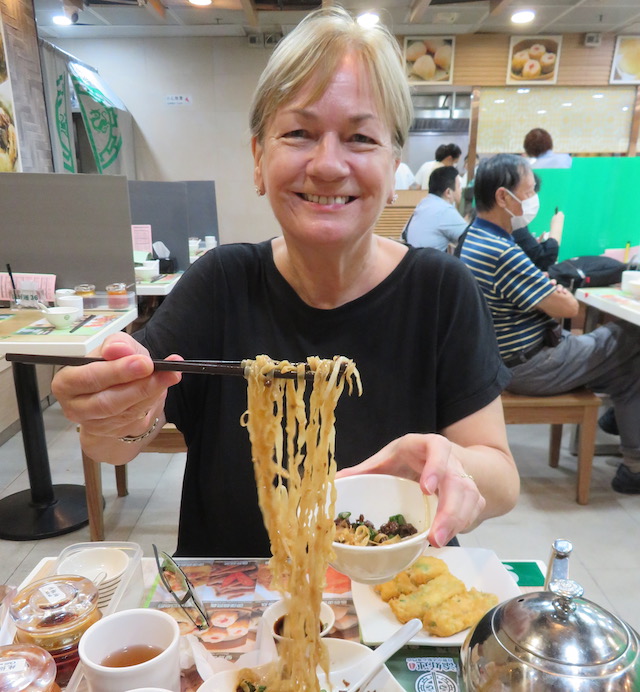
Michelin Star Meal
at Just $17 For Two
Hong Kong Dim Sum Chain Conquers World

COLIN SIMPSON
Tim Ho Wan, Hong Kong Station Branch
THINK Michelin star restaurant and the chances are you picture swanky surroundings, attentive waiters, showily presented food, and a wine list with stratospheric prices. Plus, at the end of the meal, an instantly sobering bill.
But in Hong Kong, it doesn’t have to be that way. At the Tim Ho Wan chain of dim sum restaurants you can enjoy a delicious feast for two for the equivalent of around $17. And the chain’s Sham Shui Po branch has a coveted Michelin star. This means that, in the view of the guide’s anonymous inspectors, it offers “high quality cooking, worth a stop!”
Two other branches, at Tai Kok Tsui and North Point, have the Bib Gourmand rating in the 2020 Michelin Guide Hong Kong Macau, indicating “good quality, good value cooking”. We’ve visited most of the outlets in the city – there are six – and in our view they all offer an identically high level of expertly prepared dim sum. We’ve always paid for our meals at the restaurants.
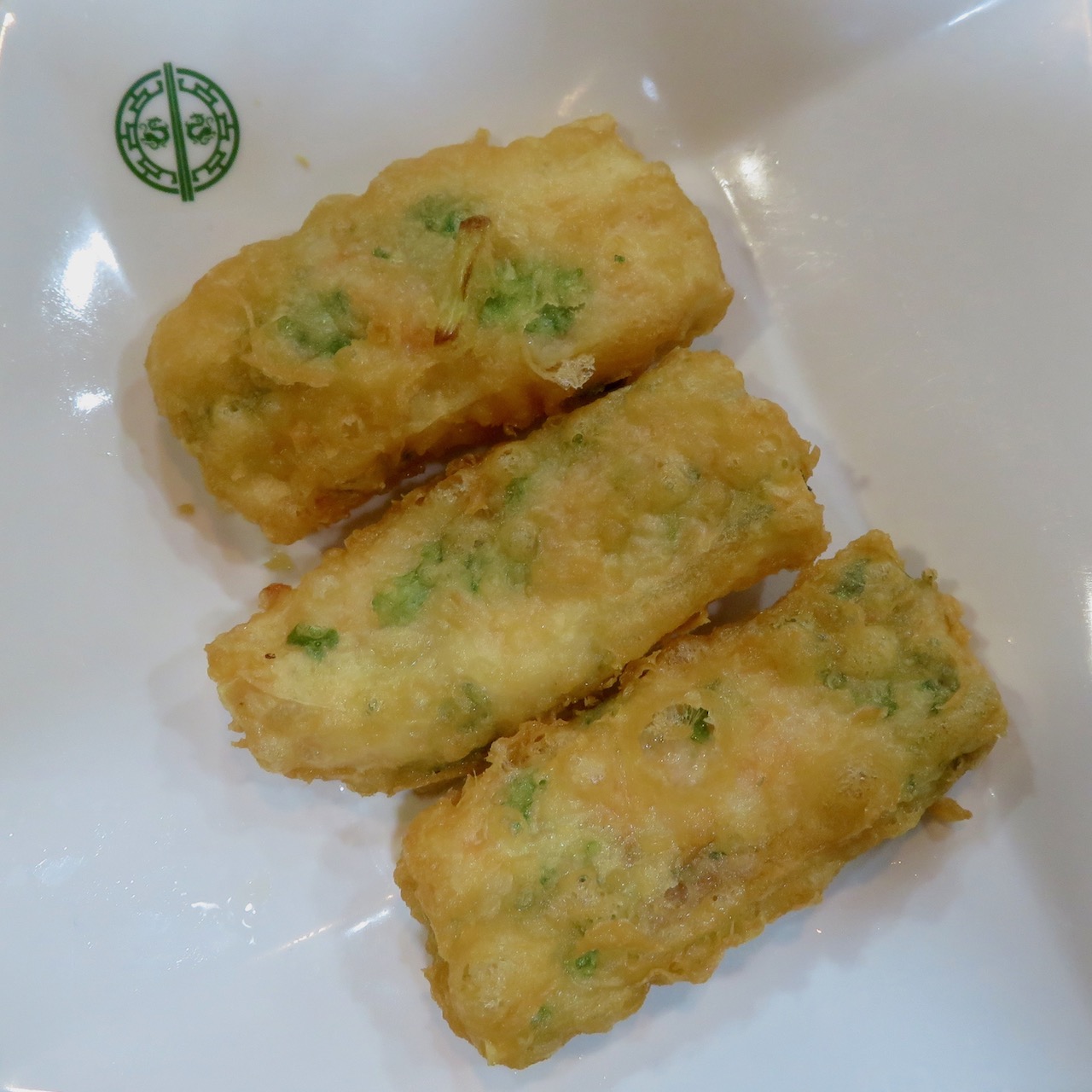
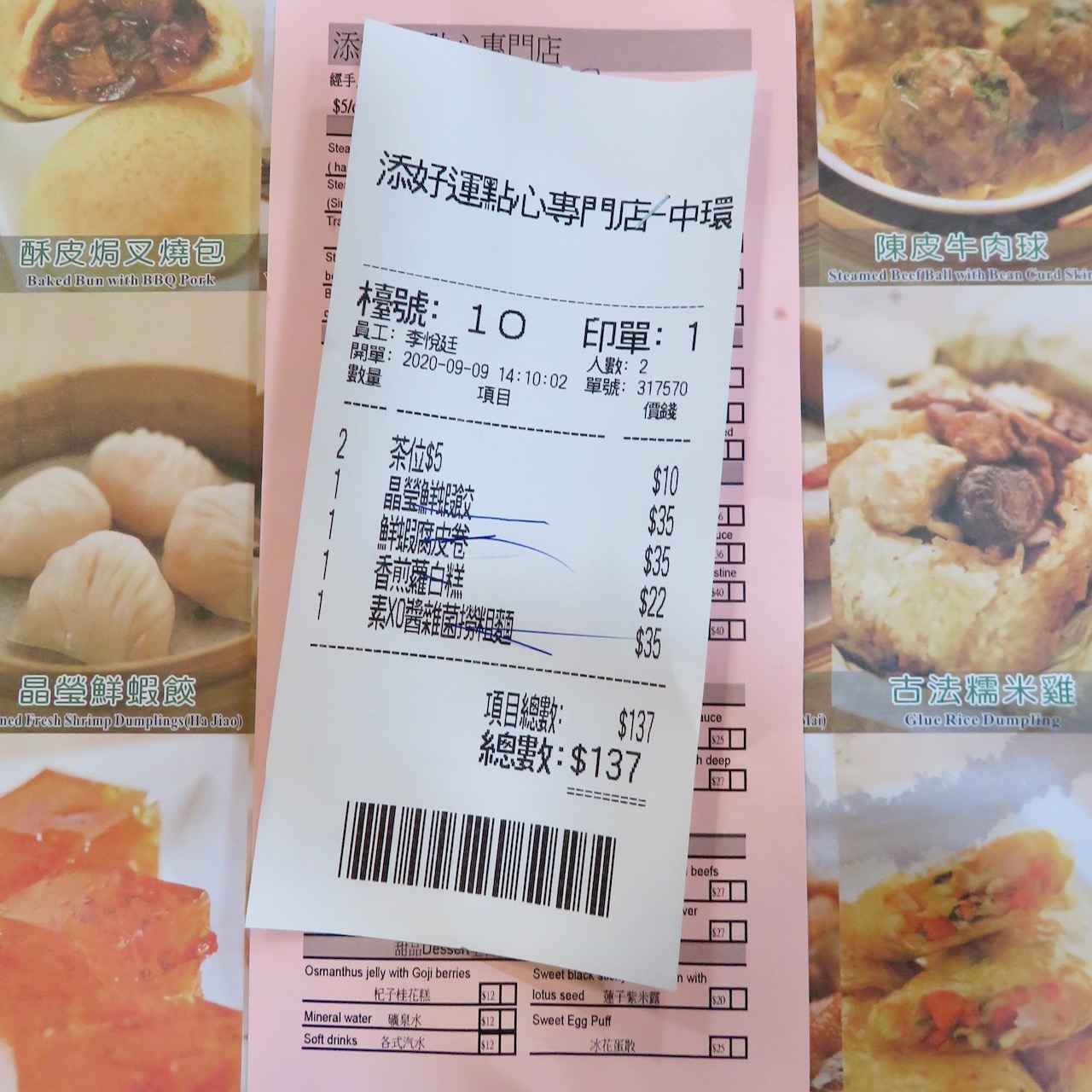
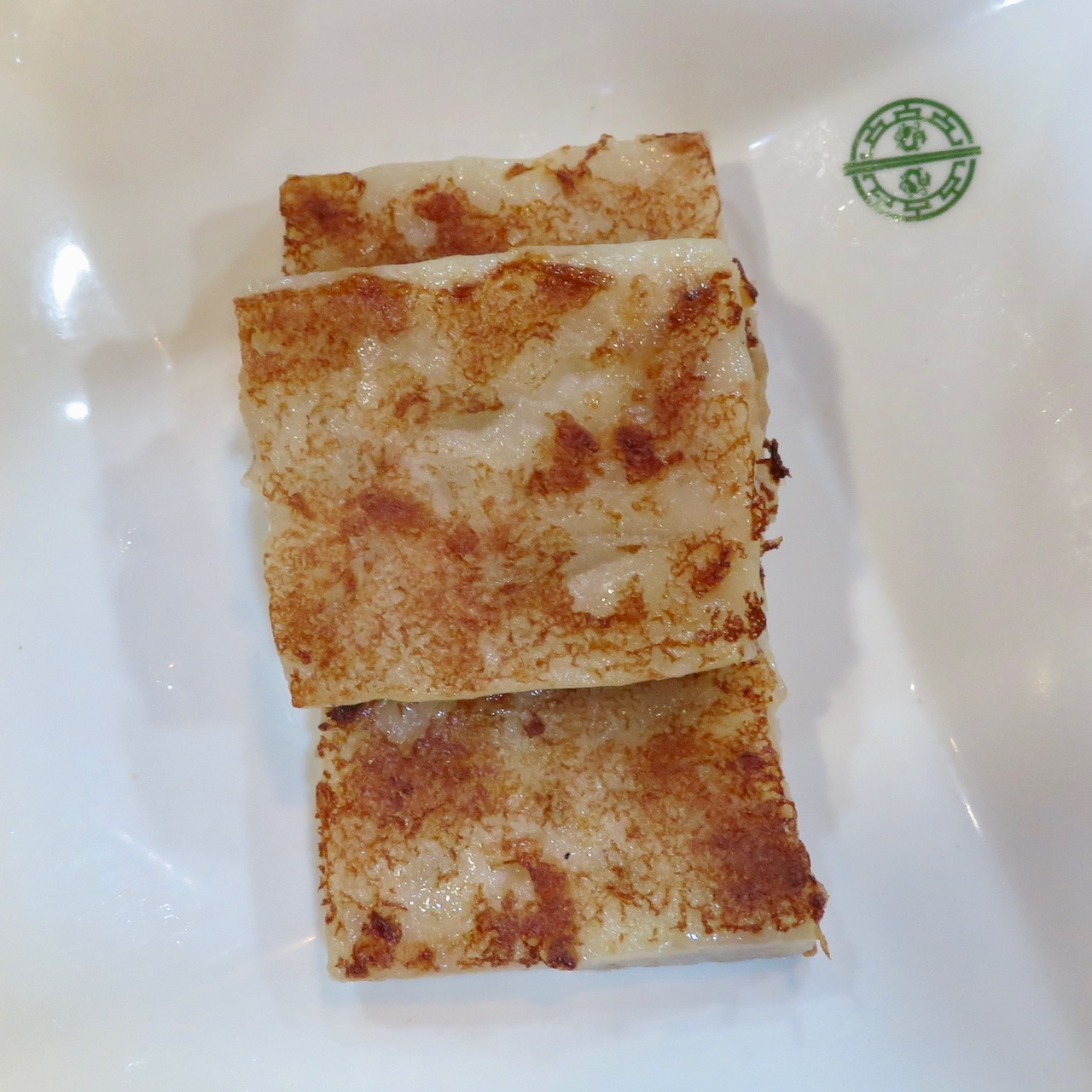
Our most recent visit was to the branch at Hong Kong Station in Central District. We shared four dishes – two of our Tim Ho Wan favourites, pan-fried turnip cake and steamed shrimp dumplings, plus rice noodles with shrimp, and deep fried bean curd roll with shrimp and chive. All were freshly cooked and delicious. The dumplings were served in a traditional bamboo steamer.
We also love the baked bun with barbecued pork, though we’re less keen on the chicken feet items. The bill came to HK$137, the equivalent of US$17 or £13. Other dishes include stewed pig’s blood jelly with pork intestine, and pork lung soup with almond juice.
Unlike a typical Michelin Guide place, you’ll find the setting pretty simple. In these coronavirus times, there are the inevitable acrylic dividers between tables. There’s no expensive wine list – Hong Kong’s Tim Ho Wan restaurants are not licensed. Instead, you wash everything down with tea – choose from pu-erh (our preference), tieguanyin or shoumei. The practice of serving dim sum originated in teahouses across the border in the Chinese mainland.
And you’re not handed a conventional menu. You order by ticking the dishes you want on a printed list, available in Chinese and English, and as they’re delivered to your table the staff tick them off on your bill. When you’re finished you take the bill to a cashier and settle up.
The chain was founded in Hong Kong in 2009 by two chefs, Mak Gui Pui, who formerly worked in a Michelin three-star restaurant, and Leung Fai Keung. Recognition came quickly – the following year the first 20-seater branch received its Michelin star in the Hong Kong edition of the famous red guide, and more outlets were opened. The restaurants are so popular that queues often form outside.
The brand later went global, and today there are franchised restaurants in the US, Japan, Australia, South Korea, Singapore, Taiwan, the Philippines, Thailand, Cambodia, Vietnam and Macau. The US outlets are in New York’s East Village and Hell’s Kitchen, Las Vegas, Irvine in California, and Hawaii. A branch is due to open soon in Houston.
Many of the dishes on offer will be familiar to those who’ve eaten at the Hong Kong outlets, though some of the international branches serve beer and wine as well as tea.
In Hong Kong, Tim Ho Wan’s dim sum is by no means the only cut-price Michelin meal on offer. The guide includes a street food section with details of places across the city where you can pick up delicious inexpensive snacks.
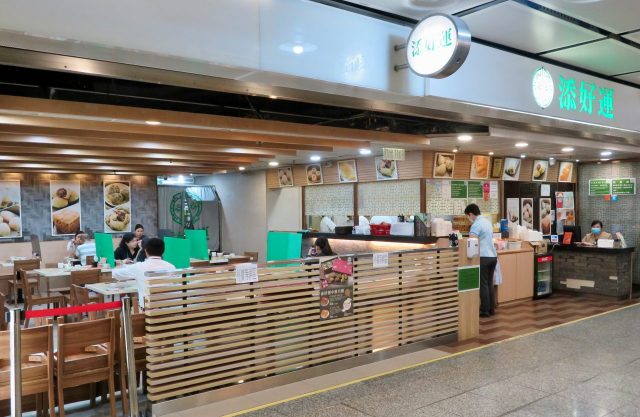
NEED TO KNOW: Tim Ho Wan
TIM HO WAN’S Hong Kong restaurants are at Sham Shui Po, Hong Kong Station, Olympic, Tseung Kwan O, North Point and West Kowloon Station. You can’t book – it’s a casual, relaxed setup where you just turn up, but be prepared to queue at busy times.
Dim sum is widely available across Hong Kong, though often at higher prices. Many other restaurants known for their dim sum, don’t – in accordance with tradition – serve it in the evening, offering other Cantonese fare instead.
If you want to enjoy Cantonese food in a luxury setting, then your best bet is probably Spring Moon at the Peninsula hotel in Kowloon. Expect to pay a lot more, though – the “classic menu” costs HK$2,188 per person – that’s US$282, or £217. And Spring Moon has the same one-star Michelin rating as Tim Ho Wan’s Sham Shui Po branch.
September 2020
MORE INFO
THE three Tim Ho Wan chains – Hong Kong, US and Asia-Pacific – each have their own websites, where you’ll find information about the restaurants and the food.
RELATED
 LUNCH AT THE WORLD’S BEST RESTAURANT: Beijing’s TRB Hutong has been named TripAdvisor’s Best Fine Dining Restaurant in the World. So what makes it so special? READ MORE
LUNCH AT THE WORLD’S BEST RESTAURANT: Beijing’s TRB Hutong has been named TripAdvisor’s Best Fine Dining Restaurant in the World. So what makes it so special? READ MORE
 BUG, SCORPION STREET SNACKS: Starfish, larvae, bugs and seahorses were among the specialities on offer at Beijing’s Donghuamen Night Market. We recall this unusual market… READ MORE
BUG, SCORPION STREET SNACKS: Starfish, larvae, bugs and seahorses were among the specialities on offer at Beijing’s Donghuamen Night Market. We recall this unusual market… READ MORE
 DINNER AT RICK STEIN’S: When I first met Sue 30 years ago we used to head to Cornwall in the south-west of England for short breaks, staying at scenic coastal towns such as Rock and Port Isaac. Sue had been going to the area… READ MORE
DINNER AT RICK STEIN’S: When I first met Sue 30 years ago we used to head to Cornwall in the south-west of England for short breaks, staying at scenic coastal towns such as Rock and Port Isaac. Sue had been going to the area… READ MORE
RECOMMENDED
 WELCOME TO OUR WORLD! Afaranwide’s home page – this is where you can find out about our latest posts and other highlights. READ MORE
WELCOME TO OUR WORLD! Afaranwide’s home page – this is where you can find out about our latest posts and other highlights. READ MORE
 TOP 10 VIRTUAL ATTRACTIONS: Many of the world’s most popular tourists sites are closed because of the coronavirus crisis, but you can still visit them virtually while you’re self-isolating. READ MORE
TOP 10 VIRTUAL ATTRACTIONS: Many of the world’s most popular tourists sites are closed because of the coronavirus crisis, but you can still visit them virtually while you’re self-isolating. READ MORE
 SHIMLA, QUEEN OF THE HILLS: Government officials once retreated to Shimla in the foothills of the Himalayas to escape India’s blazing hot summers. Now tourists make the same journey. READ MORE
SHIMLA, QUEEN OF THE HILLS: Government officials once retreated to Shimla in the foothills of the Himalayas to escape India’s blazing hot summers. Now tourists make the same journey. READ MORE
 TEN THINGS WE LEARNED: Our up-to-the-minute guide to creating a website, one step at a time. The costs, the mistakes – it’s what we wish we’d known when we started blogging. READ MORE
TEN THINGS WE LEARNED: Our up-to-the-minute guide to creating a website, one step at a time. The costs, the mistakes – it’s what we wish we’d known when we started blogging. READ MORE
 TROUBLED TIMES FOR EXPATS: Moving abroad can seem an idyllic prospect, but what happens when sudden upheavals or the inescapable realities of life intrude? READ MORE
TROUBLED TIMES FOR EXPATS: Moving abroad can seem an idyllic prospect, but what happens when sudden upheavals or the inescapable realities of life intrude? READ MORE
Disclosure: Afaranwide is an affiliate of leading travel operators such as Booking.com and Japan Rail Pass. If you purchase through our site we receive, at no additional cost to you, a small commission. We only work with companies we have used and recommend.


